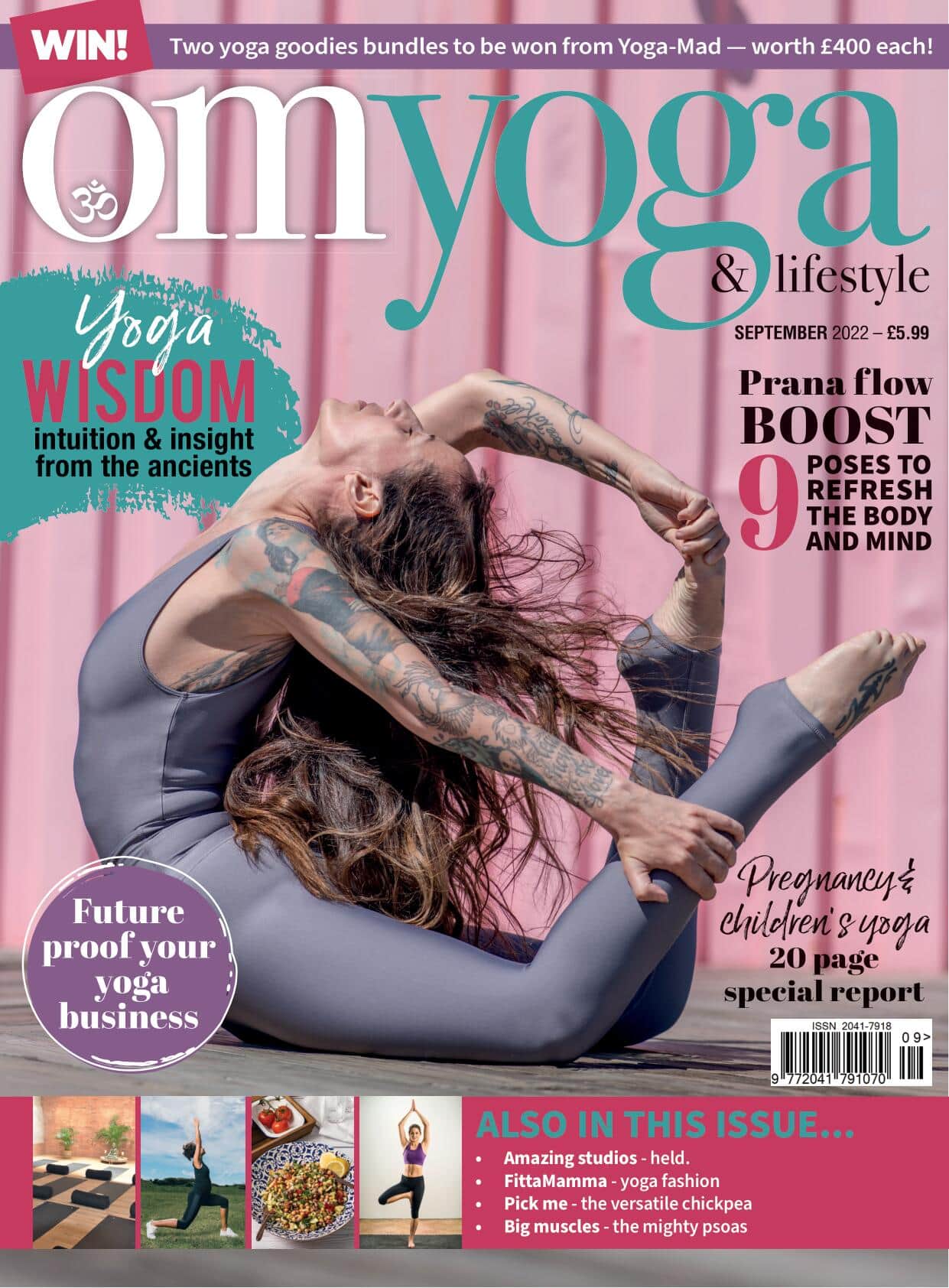
The quiet wisdom of breathing less
Why less is more when it comes to breath. By Suzanne Davies
The ancient yogis understood the power of the breath. A dip in my health a few years ago, made me acutely aware of just how deep this wisdom runs. What I learned in the process of healing myself transformed my understanding of pranayama.
I practice pranayama daily, usually the energising techniques that give you a buzz, and leave you feeling blissed out afterwards, like Tummo, and Breath of Fire.
In 2019, inexplicably I started to wheeze. I’d be breathless after mild exercise. I felt my energy levels drop, and I had trouble concentrating. I initially put it down to the perimenopause and persisted with my daily pranayama.
Pranayama oxygenates?
When I trained to be a yoga teacher, we of course studied pranayama. We covered the mechanics – a deep breath, using the diaphragm – and techniques like Nadi Shodhana. We learned that the exhale relaxes.
We didn’t really cover the chemistry of breathing other than the claim that pranayama oxygenates the body. How this works wasn’t explained but the implication was ‘oxygen good, carbon dioxide bad’; the more breath we take in, the more oxygen our body receives. Dumping carbon dioxide – a toxic waste product – was very much encouraged.
I have experienced this idea in many yoga classes too. Deep breath in….and let it out, big breath out through the mouth. It’s how I taught for years. And, also, how I practiced: audible breaths, where deep implies big exhaling with loud sighs.
The carbon dioxide key
My wheezing got worse. At the start of the pandemic, when lung health was on everyone’s mind, I saw a video of Patrick McKeown talking about Buteyko breathing. What he said turned my understanding of breath on its head.
Since our entire physiological system is founded on the balance of oxygen and carbon dioxide, it turns out breath chemistry is hugely important! Breathing needs to support this balance. Moreover, far from being just a waste product, carbon dioxide is the key to it. I signed up to study Buteyko.
The habit of over-breathing
The chemistry of breathing is complicated but, in a nutshell, carbon dioxide is the driver. When carbon dioxide levels in the body hit a certain level, it triggers an inhale. Additionally, it is carbon dioxide levels that determine our uptake of oxygen. If we have too little carbon dioxide in the body, any oxygen we breathe in is merely circulated throughout the body and then exhaled (the Bohr effect).
The level of carbon dioxide we can tolerate can change. If we consistently over-breathe, eventually the level is reduced, and we maintain a lower amount of carbon dioxide in the body. This makes us breathe more frequently, and less oxygen is released to our cells. This is essentially what had happened to me. Through a habit of over-breathing, I had disturbed my oxygen/carbon dioxide balance. My daily pranayama practice was actually robbing me of oxygen. I was tired, and unable to focus. I was leaking prana.
Now, to clarify, I am not saying that pranayama caused this – my practice reinforced and exacerbated something pre-existing. The main causes of carbon dioxide depletion are lack of movement, and over-breathing (breathing more than we need). Over-breathing can be triggered by illness and chronic pain, medications, persistent stress, poor diet, overheated homes, menopause, snoring, exercise, and talking for a living – in other words, many conditions that bring people to yoga in the first place. Modern living lends itself to over-breathing; for many of us it has become a habit.
Yoga wisdom
If you’re an over-breather, you want to breathe less not more. Big audible sighs might feel nice, but they are merely maintaining a bad habit. Buteyko breathing teaches us to breathe light, and slow, reducing rate and, crucially, volume. It also encourages breath holding (especially after the exhale) to raise carbon dioxide tolerance.
This is the wisdom of the classical yoga texts which speak of the breath as a delicate thread, of sipping the inhale, making the exhale subtle, keeping the breath close to the body. We are told to extend the spaces between the breath until the breath becomes so consistently subtle that it stops. Still the breath, still the mind. Yoga wisdom has all along spoken of the benefits of developing our carbon dioxide tolerance. Somewhere in my training and practice, I had missed this.
Making the change
Making the change Breathing less is difficult; it takes patience and commitment. You are correcting a deeply entrenched habit and dealing with uncomfortable feelings of suffocation and anxiety. (Try Nadi Shodhana with both reduced breathing rate and volume of air if you don’t believe me). I found the process excruciating. However, the benefits of breathing in this way have been life changing. Not only has the wheezing stopped, I now breathe more easily even during exercise. My energy levels have increased and stabilised. I tape my mouth closed at night and sleep better than ever. I have less nasal congestion, and my perimenopausal symptoms have eased. Among other things, carbon dioxide has a sedative effect. It also relaxes smooth muscle. My new ‘less is more’ pranayama practice leaves me feeling content, relaxed, and my meditation practice is deeper.
I still teach and practice the ‘off-gassing’ breath techniques like Tummo – they too have profound benefits. But now I monitor my carbon dioxide levels and always end my practice with Buteyko style pranayama.
In class I teach Buteyko functional breathing first and foremost. Only once my students have mastered this, do we explore breaths like Kapalabhati. Breathing less has benefited my students with conditions like anxiety, fatigue, long Covid, allergies and digestive issues. My teaching cues have also changed. Now I encourage people to breathe lightly and silently. Breathe as though you are barely breathing at all. I make sure my students understand what I mean by ‘breathe deeply’.
THE COMFORTABLE PAUSE
Dysfunctional breathing can be easily hidden – just one yawn or sigh every now and then can be enough to mask lowered carbon dioxide levels. To monitor your own breath health, try this simple test called the Comfortable Pause. It is best done in the morning (prior to coffee). You will need a timer.
Sit comfortably and settle.
Inhale normally through the nose, and exhale normally through the nose.
After the exhale, pinch your nose and hold the breath out. Time how long it takes for you to feel the first urge to breathe in. This is usually felt as a contraction of the diaphragm or tightening of the throat. When you feel the initial urge to breathe in, remove your fingers from your nose, and look at the timer. Breathe in through your nose calmly.
This is NOT a test to see how long you can hold your breath. It is a measure of how long it takes your body to react to a build-up of carbon dioxide. It’s a ‘Comfortable’ Pause – do not hold the breath out so long that you feel panicked and are gasping for air. The ideal score for a healthy person is 40 seconds plus. Anything under 25 seconds is considered dysfunctional. Under 10 is cause for concern.
Suzanne Davies is a Senior Yoga Teacher, and Trainer Pro (Yoga Alliance Professionals) and Breath Coach in Hertfordshire. She runs Babacool (babacool.net) with her husband, Alex. They offer training (including 220hr yoga teacher training) in London and online.




